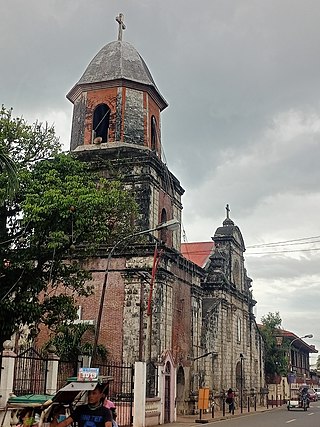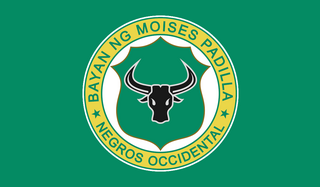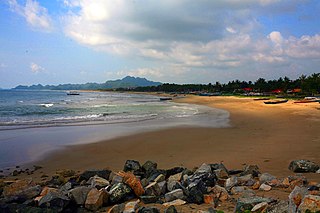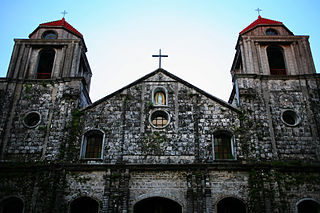Victorias | |
|---|---|
| City of Victorias | |
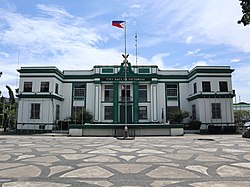 City hall | |
| Nickname(s): "The Sugarlandia of Negros" "The Sweet and Green City of Negros" | |
 Map of Negros Occidental with Victorias highlighted | |
Location within the Philippines | |
| Coordinates: 10°54′N123°05′E / 10.9°N 123.08°E | |
| Country | Philippines |
| Region | Western Visayas |
| Province | Negros Occidental |
| District | 3rd district |
| Founded | October 2, 1906 |
| Cityhood | March 21, 1998 |
| Named for | Nuestra Señora de las Victorias (Our Lady of Victory) |
| Barangays | 26 (see Barangays) |
| Government | |
| • Type | Sangguniang Panlungsod |
| • Mayor | Javier Miguel L. Benitez |
| • Vice Mayor | Abelardo D. Bantug III |
| • Representative | Jose Francisco B. Benitez |
| • City Council | Members |
| • Electorate | 61,877 voters (2022) |
| Area | |
| • Total | 133.92 km2 (51.71 sq mi) |
| Elevation | 166 m (545 ft) |
| Highest elevation | 1,568 m (5,144 ft) |
| Lowest elevation | 0 m (0 ft) |
| Population (2020 census) [3] | |
| • Total | 90,101 |
| • Density | 670/km2 (1,700/sq mi) |
| • Households | 22,268 |
| Economy | |
| • Income class | 4th city income class |
| • Poverty incidence | 12.86 |
| • Revenue | ₱ 742.2 million (2020) |
| • Assets | ₱ 2,554 million (2020) |
| • Expenditure | ₱ 581.6 million (2020) |
| • Liabilities | ₱ 1,003 million (2020) |
| Service provider | |
| • Electricity | Northern Negros Electric Cooperative (NONECO) |
| Time zone | UTC+8 (PST) |
| ZIP code | 6119 |
| PSGC | |
| IDD : area code | +63 (0)34 |
| Native languages | Hiligaynon Tagalog |
| Website | www |
Victorias, officially the City of Victorias (Hiligaynon : Dakbanwa sang Victorias; Filipino : Lungsod ng Victorias), is a 4th class component city in the province of Negros Occidental, Philippines. According to the 2020 census, it has a population of 90,101 people. [3]
Contents
- Geography
- Barangays
- Climate
- Demographics
- Economy
- Religion
- Churches
- St. Joseph the Worker Chapel
- Festivals
- Notable personalities
- Education
- References
- External links
Victorias is notable for the St. Joseph the Worker Chapel, which was declared as an Important Cultural Property of the Philippines [5] in December 2015.
It is also the site of Victorias Milling Company, the world's largest integrated sugar mill, [6] sitting on a 7,000 hectares (17,000 acres) compound that makes it the Philippine's largest sugar refinery.
Victorias City also serves as the access point to the Northern Negros Natural Park, popular among hikers visiting Mount Mandalagan and Mount Silay.
Victorias City is 34 kilometres (21 mi) from Bacolod.











